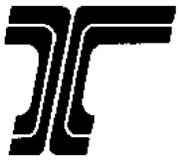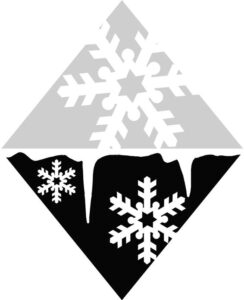SNOW ZONES
Oregon’s chain and traction tire law applies to all highways throughout the state. When driving in winter conditions, you may see lighted message signs or signs like these letting you know the current requirements for chains and traction tires:
-
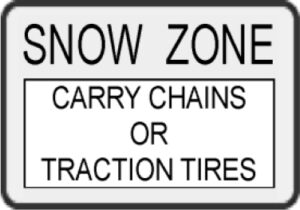
- You must have chains or traction tires in or on your vehicle and they must be the right size for your vehicle and of sufficient number to comply with the minimum chain requirements.
- You must use chains if your vehicle is:
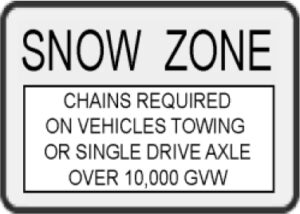
- Rated 10,000 pounds gross vehicle weight (GVW) or less and is towing.
- A single drive axle vehicle rated over 10,000 pounds GVW whether towing or not. Chains must also be used on the trailer or vehicle being towed.
- You must use chains if your vehicle is towing or rated more than 10,000 pounds GVW. Chains must also be used on the trailer or vehicle being towed if it has a brake that operates while in tow.
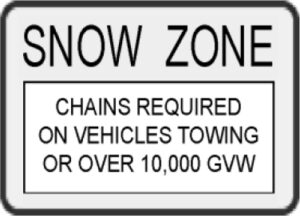
- You must use chains if your vehicle is towing or rated over 10,000 pounds GVW. Chains must also be used on a trailer or vehicle being towed if it has a brake that operates while in tow. If your vehicle is rated 10,000 pounds GVW or less and is not towing you must use chains or traction tires.
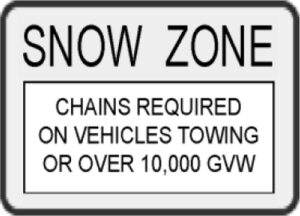
EXEMPTIONS
The following vehicles are exempt:
1. Police vehicles. Fire vehicles, ambulances, and Department of Transportation highway maintenance vehicles* when performing their duties.
2. Four-wheel or all-wheel drive passenger vehicles if all of the following statements are true:
a) It has an unloaded weight of 6,500 pounds or less;
b) It is operated to provide power to both the front and rear wheels;
c) It is carrying chains;
d) It has mud and snow, all-weather radial or traction tires on all of its wheels;
e) It is not towing another vehicle or a trailer;
f) It is not being operated in a manner or under conditions that cause the vehicle to loose traction.
3. Utility company vehicles, such as water, power, or heat, when providing emergency response services.
4. A bus that is rated over 10,000 pounds GVW due only to accessibility modifications for disabled persons is exempt from the chain requirements for vehicles rated over 10,000 pounds GVW unless it is towing or being towed.
5. Motorcycles are exempt from carrying chains or traction tires but may not travel in areas where chains or traction tires are required for all or certain vehicles.
*NOTE: Although exempt, ODOT vehicles use chains in most winter situations. Studded tires are not used because of the damage such tires cause to the highway.
CONDITIONAL CLOSURE
In very bad winter conditions a road may be closed to all or certain types of vehicles. All vehicles may be required to use chains regardless of the type of vehicle or type of tire being used. This is known as a conditional closure and is signed based on the situation.
DEFINITIONS
“Chains” include link chains, cable chains, or any other device that attaches to the wheel, vehicle or outside of the tire that is specifically designed to increase traction on ice and snow.
“Traction Tires” are studded tires, retractable studded tires, or other tires that meet the tire industry definition as suitable for use in severe snow conditions.
- Tires designated by the tire industry display an emblem on the tire sidewall like this:
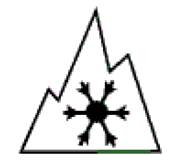
- “Retractable Studded Tires” are tires with embedded studs that retract to at or below the wear bar of the tire and project not less than .04 inch beyond the tread surface of the tire when extended.
- “Studded Tires” are tires with studs that wear at the same rate as the tire tread. The studs must extend at least .04 inch but not more than .06 inch beyond the tread surface of the tire. Studded tires are only legal in Oregon from November 1 through March 31
MINIMUM CHAIN REQUIREMENTS
Light Duty Vehicles
Vehicles with a GVW rating of 10,000 pounds or less, such as a passenger car or light truck, must use chains on one tire on each side of the primary drive axle.
When towing, chains must also be on one tire on each side of one axle of a trailer that is equipped with a brake.
Traction tires may be used in place of chains when the vehicle is not towing or being towed.
Medium Duty Vehicles
Vehicles with a GVW rating of more than 10,000 pounds but less than 26,001 pounds such as buses, RVs, and cargo vehicles.
Single-drive axle medium duty vehicles must have chains on one tire on each side of the drive axle.
Tandem-drive axle medium duty vehicles must have chains on two tires on each side of the primary drive axle; or if both axles are powered by the drive line, one tire on each side of each drive axle.
A medium duty vehicle with one single-wheel axle and one dual-wheel axle must have chains on one tire on each side of the dual-wheel axle.
When towing, chains must also be on one tire on each side of one axle of a trailer that is equipped with a brake.
Commercial Vehicles
Vehicles with a GVW rating of 26,001 pounds or more.
Single-drive axle solo commercial vehicles must have chains on one tire on each side of the drive axle.
Tandem-drive axle solo commercial vehicles must have chains on two tires on each side of the primary drive axle; or if both axles are powered by the drive line, one tire on each side of each drive axle.
Commercial vehicles with trailers generally must have chains on two tires on each side of the primary drive axle; or if both axles are powered by the drive line, one tire on each side of each drive axle.
Chains must also be on at least one tire on the front axle and one tire on one of the rear axles of the trailer. If the trailer is a semitrailer, chains must be used on two tires, one on each side, of any axle.
For specific chain requirements for commercial vehicles, contact an ODOT Port of Entry or go online at www.tripcheck.com.
PENALTIES
Drivers who disobey signs requiring chains or traction tires to be carried are subject to a Class C traffic violation. Drivers who don’t use chains or traction tires when required could be subject to a specific fine traffic violation with a $880 fine.
ADDITIONAL INFORMATION
More information on Oregon’s chain law is available online at www.tripcheck.com.
REMEMBER — Oregon’s weather can change quickly. Check online at www.tripcheck.com or call Oregon’s Highway Advisory Telephone for road conditions. In Oregon dial 5-1-1. (If 3- digit dialing is not available from your phone service provider, call 1-800-977-6368.) When calling from outside Oregon, dial 1-503-588- 2941.
For other questions about ODOT services, call 1-888-ASK-ODOT.
Information in this brochure was compiled by ODOT based on ORS 815 and OAR Chapter 734, Division 017.
This brochure is distributed in cooperation with the Northwest Tire Dealers Association.
|
|
Oregon Department of Transportation 355 Capitol St. NE Salem, Oregon 97301 |

